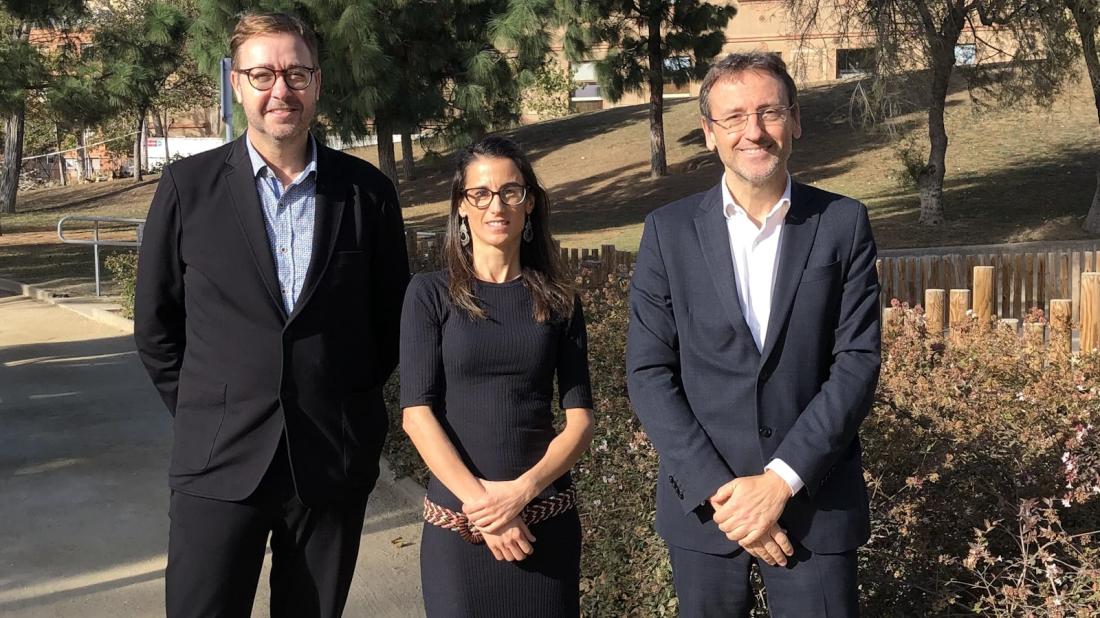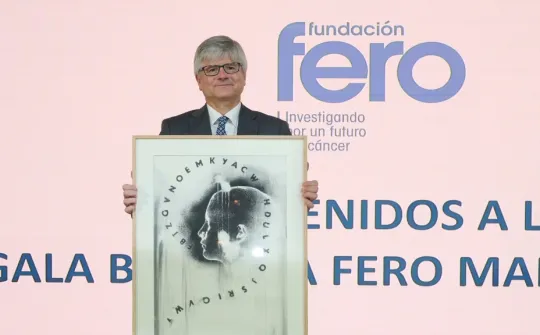An ultrasound scan at the end of pregnancy allows serious neonatal complications to be avoided in babies at risk

A study conducted by SJD Barcelona Children's Hospital and Hospital Clínic de Barcelona has demonstrated that inducing labour at term in such cases reduces these complications and ICU admissions of these babies by half.
Conducting a Doppler test alongside the routine ultrasound scan in the third trimester of pregancy in order to ascertain the blood supply to the fetus’ brain and to the placenta make it possible to work out which babies are at risk of suffering complications during the postpartum period or who may require admission to an ICU. In these cases of risk, inducing labour at term could reduce neonatal ICU admission rates by half. This has been demonstrated in an international multicentre study called RATIO37, published in the journal, The Lancet.
The study was the idea of and led by Eduard Gratacós, director of BCNatal at SJD Barcelona Children's Hospital and Hospital Clínic de Barcelona, and Francesc Figueras, head of the Maternal and Fetal Medicine Service at Hospital Clínic de Barcelona, and has been given funding by the“la Caixa” Foundation and the CEREBRA Foundation. The study’s first author is Marta Rial Crestelo from the Fetal and Perinatal Medicine research group (IDIBAPS and CIBERER).
Fewer than 1% of babies in low risk pregnancies show any complications in the last two or three weeks of pregnancy or who require admission to an ICU when they are born. A very common cause for admissions is placental insufficiency that can lead to a lack of oxygen when the contractions in the uterus start at the end of pregnancy or during labour.
Placental insufficiency very often goes unnoticed in routine ultrasound check-ups. Until now, an underweight fetus was used as an indicator as in many cases this is a consequence of placental insufficiency. However, this method does not detect every case. Some babies with a normal weight present placental insufficiency because it has appeared late in pregnancy so there is no fetal weight loss.
The aim of the RATIO37 study was to improve the rate of identification of babies at risk of stillbirth or complications that required admission to an ICU by assessing the placental function in the third trimester using an ultrasound scan with Doppler, called the cerebroplacental ratio (CPR), which measures blood circulation in the umbilical cord and the brain, i thus making it possible to detect placental insufficiency. To date, this test was only conducted in very specific cases. For over ten years now there has been controversy in scientific circles about the suitability of measuring the CPR in all pregnant women.
More than 11,500 low-risk pregnant women from a number of hospitals in different countries were recruited for the trial over six months. Their CPR was measured in all of them in week 36 of gestation. The women were randomly divided into two groups. The group of pregnant women examined whose CPR results flagged up a risk underwent induction when their pregnancy came to term. The other group of pregnant women went through with their pregnancy according the usual guidelines.
The authors of the study compared the neonatal complications (neurological, intestinal, cardiac, renal and respiratory problems that required a stay in ICU for more than ten days) experienced in the two groups.
The results showed that there were serious neonatal complications in 0.38% of the pregnancies that required intervention based on the CPR results and 0.73% in the pregnancies that followed normal guidelines.
Selection of candidates for induced labour
Although this difference seems small, it allows the number of cases of serious complications in pregnancies classified as low risk to be reduced by 3.5 in every 1,000 pregnancies. If these figures are extrapolated to the total number of births in Spain in 2022 (330,000), 1,150 serious neonatal complications could be avoided. “The results are very revealing, as they provide data that will be fundamental in a scientific argument that has been going on for more than ten years and they denote an advance in arriving at better ways of fine-tuning the detection of pregnant women at risk and preventing serious neonatal complications. Over the coming years, these results will give rise to discussion in scientific societies and conferences. The way they are used in different environments must be weighed up, but they will no doubt bring about changes in the recommendations of many healthcare guidelines in monitoring pregnancies around the world", explained Eduard Gratacós, director of BCNatal.
An additional outcome of the study is that it will lead to further progress in the objective to be far stricter in the selection of candidates for induced labour. Some international scientific societies and professional associations support the induction of labour at term in nulliparae (women who have never borne a child), because it has been demonstrated that this reduces serious neonatal complications and does not increase the rate of cesarean sections.
However, this would entail inducing labour in half the number of pregnant women. This study has demonstrated that it is possible to much more selectively identify – specifically 5% – of pregnancies that would actually benefit from measures such as induced labour, which is a step towards personalised maternal–fetal medicine that requires minimum intervention.
The study was carried out in six different countries with the following partners from various leading international centres: Palacký University Olomouc, Czech Republic (Marek Lubusky); Institute for the Care of Mother and Child, Prague, Czech Republic (Ladislav Krofta); University Hospital Hradec Králové, Czech Republic (Marian Kacerovsky); Saint Sophia Hospital, Warsaw, Poland (Anna Kajdy); Tel Aviv Sourasky Medical Center, Israel (Eyal Zohav); Hospital Clínico de la Universidad de Chile, Santiago de Chile, Chile (Mauro Parra Cordero); Hospital del Mar, Barcelona, Spain (Elena Ferriols Pérez); and Hospital de Especialidades del Niño y la Mujer, Querétaro, Mexico (Rogelio Cruz).



